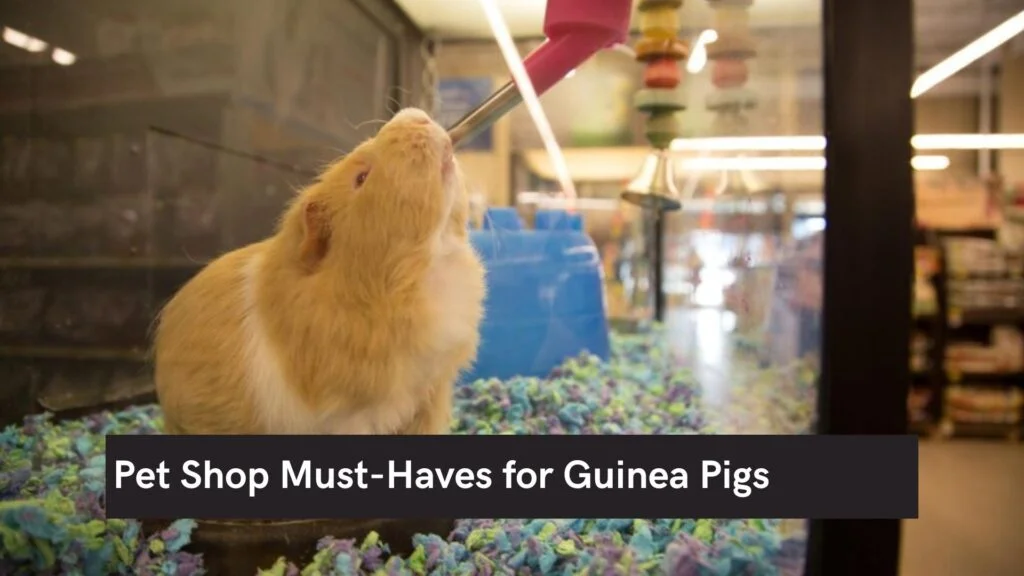Pet Shop Must-Haves for Guinea Pigs. In the case of a guinea pig its cage is its reserve, its privacy. But it is also and foremost somewhere to exist where it can flourish. Making the right decision on choosing this space would enable your pet to be happy and to lead a harmonious life with you. To do this, one must familiarize himself with the needs of his guinea pig and the available options. Pet Shop Must-Haves for Guinea Pigs include a big, comfortable cage—height is good, but width is often better. The most common model is the barred cage, which is especially suitable for guinea pigs.
Two-level cage: The benefit of this kind of a cage is that it renders your rodent a really beautiful living environment taking less space on the floor. Even the most generous cages give you the possibility to have a bunch of individuals. Wooden cage: Wooden cages are a desirable choice, as they are quite attractive, except that they may be harder to clean. Outside: Playpens are specifically useful outside and can be the best home of your rodent on a sunny day. This interim liberty will assist them to flourish in your firm.
Guinea Pig Cage

The best cage When selecting the most optimum cage, take care of the needs of your pet and yours too. Your pet will get sufficient space in a multi-tiered cage. A litter box has one that is clever to clean. There is a side opening to pull the rodent out of fear. Plexiglas and wood have better appearance yet they bear disadvantages. The best cage is first and foremost, one that should satisfy the needs of your guinea pig as well as yours.
I would like an outside cage An outdoor cage, which should be used when it is warm outside, is an appropriate option in case you do possess a garden that can provide your rodent with some liberty. Playpens enable expansive and safe enclosure and run offers good shelter.
Special Toys for Guinea Pigs

To remain happy and healthy, Guinea pigs need some toys and items. Some of the toys and items that may be deemed as the most appropriate to guinea pigs include the following: Chew Toys The teeth of guinea pigs never stop growing, and, therefore, guinea pigs have to chew in order to wear off their teeth. They can chew something boring as a hardwood or hay chew toy to fix this inborn necessity. Loopholes and Murder Holes Guinea pigs have the tendency to explore and hide in mini caves. They will have fun rolling and rest in fabric, plastic tunnels. Rolling Toys and Balls Guinea pig can play with balls or rolling toys that suit their size. These toys enable them to push and investigate and cause their curiosity.
Cards Work with Boxes and Tubes Give them cardboard boxes and tubes on which guinea pigs may climb on as well as chew and burrow on. Ensure that they do not have toxic inks or glues. The Ladders and the Platforms Guinea pigs like climbing and viewing various levels. Their play area could provide safe platforms as well as ladders, which they could find fun. Hay stuffed fabric mice These are toys that guinea pigs can chew and play. He or she can also use it as security for hiding places as well as get comfortable to rest on them.
Budget for Enrichment

Most of such things as are required in enrichment (toys, treats, etc.) are available on our Amazon Wish List, therefore, the donations are provided by people and hence the cost is minimal. We also request staff and volunteers to collect cardboard boxes, old phone books and toilet paper rolls that would serve as toys and tunnels to our rabbits and guinea pigs.
The most precious thing in any shelter is time so it is of paramount importance to make sure that the staff and volunteers will be able to allocate their time to do this work during the working daytime. We have worked it out by having a staff member responsible to monitor enrichment of all species daily. All the enrichment tasks are not supposed to be carried out by them, but by working with volunteers and me, everything has to be done. In the case of animals we include under the heading of miscellaneous.
Providing Species-Specific Dietary Enrichment for Small Animals

Offering salads to the animals and making sure we fulfill their other dietary species-specific needs are one of the simplest parts of enriching small animals. The food list of our kitchen includes fruits and vegetables suitable to the most popular pets: rabbits, guinea pigs, chinchillas, hamsters, rats, degus, gerbils, parakeets and cockatiels. We also have a volunteer or a staff who would visit down the street market every week to buy ingredients of the week. Our livestock (or any animal, in general) gets numerous delicious treats.
Rabbits and small animals get all types of vegetable and sometimes fruits. We attempt to create an environment where we encourage foraging by putting salads in toys or hiding them in boxes or other forms of objects. We owned an African grey parrot and she would literally talk out and say, time to go to work and then swipe her pistachios in the toy they were put in. Not only did this give this animal some pleasure, but in seeing her make suppers out of her foraging time, I think it gave our shelter staff, volunteers and clients some pleasure.
